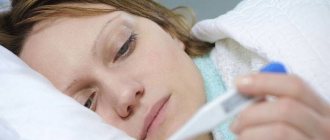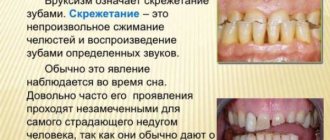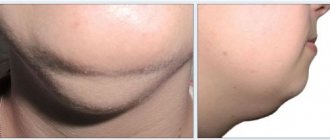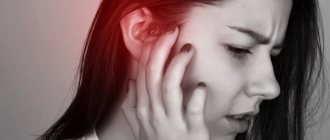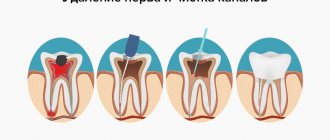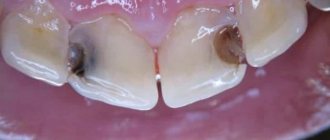The causes of headache discomfort are varied. In most cases, they are associated with psycho-emotional shocks, physical fatigue or stress.
A person just needs to take pills that help eliminate pain. After this, my head doesn't hurt.
However, there are other causes of headaches associated with the progression of various pathologies.
If a person’s headaches do not go away after 2-3 days, there is a high probability that he is sick. In this case, painkillers do not help him.
Why does pain occur that cannot be relieved with medications? What needs to be done to eliminate it? Let's figure it out.
Reasons for this phenomenon
There are several types of headaches that cannot be treated with painkillers. The causes of their occurrence are associated with internal ailments.
Usually, discomfort with such ailments accompanies the patient even on the 3rd day. So, the main reasons for a very severe headache are:
- Tension pain.
- Migraine.
- Cluster pain.
- Hangover.
- Brain cancer.
- Temporal arteritis.
- Intracranial bleeding.
If a person has a severe headache, which even on the 2nd day does not help with painkillers, there is a high probability that he suffers from one of these ailments. Let's talk about each of them.
Painkillers don't help: what to do
Pain is the most tangible feeling familiar to everyone. However, what about pain that is of an unusual nature? For example, pain due to a slight blow of wind, which is not treated with a bunch of pills with an anesthetic effect.
It would seem that man has defeated his main enemy among his own feelings, creating substances that affect the results of the nervous system, capable of drowning out the body's alarm signal. But sometimes this is not enough.
Let's figure out what to do in such cases.
Types of pain
In modern medicine, there are two categories of pain syndromes: nociceptive and neuropathic. This division was not reached immediately, and only 20 years ago a new point of view appeared, which took into account cases when conventional drug therapy did not help.
With nociceptive syndromes, everything is very clear: pain occurs due to irritation in the receptor tissues, which is caused by various damage to the body: fracture, sprain, burn, and so on. This pain is treated with analgesics, and any doctor will be able to make an accurate diagnosis.
The subject of the article is neuropathic pain. This is a rather rare category, which is confirmed by statistics: out of 100 cases, only 5 are caused by damage to the nervous system. In these cases, the pain is not treated with the usual “painkillers”.
Causes of neuropathic pain
Its causes include various ailments:
- diabetic polyneuropathy (in addition to the usual symptoms, the patient is plagued by intense dull and burning pain that does not respond to treatment with analgesics),
- postherpetic neuralgia,
- phantom pain in people who have experienced amputation,
- spinal cord injuries,
- multiple sclerosis.
In general, those diseases that, by their destructive effect, affect the nervous system.
The characteristic differences of neuropathic pain make everyday life impossible due to its regularity. Chronic pain does not go away for a long period of time; it usually occurs due to irritations that are not capable of causing pain, for example, a blow of wind.
Sensations are expressed by such phenomena as numbness, shooting pain, “crawling” goosebumps, burning, tingling. Many people, feeling this every day, are unable to work, sleep normally and do normal things. As a result, depression is added to the pain due to the consequences of the disease.
Tension pain
Tension causes of headaches are the most common. The difficulty in treating such discomfort is that it is difficult to diagnose the source of its occurrence.
In most cases, the reasons why tension pain occurs are associated with psycho-emotional shocks.
In today's fast-paced life, it is sometimes difficult to maintain multifunctionality.
With this disease, a person experiences severe discomfort, mainly in the upper part of the forehead. The eyeballs and upper facial muscles become very tense during a tension headache.
When the patient tries to relax his face, he does not feel better. The pain is very strong, sometimes throbbing. Attempts to stop it with medications do not bring results.
How long does this discomfort last? Usually, he makes himself known at lunchtime. It lasts about half an hour. If the patient is under stress, his discomfort increases.
What to do if it doesn’t go away on the second day? Unfortunately, painkillers rarely help eliminate this kind of discomfort.
Therefore, taking them, in this case, is not effective. To help the patient feel better, you should create a relaxing environment for him. It is important that nothing disturbs him.
A person suffering from this disease is recommended to take a lying position and apply a cold compress. The room in which it is located must be well ventilated.
If tension headaches do not go away on day 3, the patient should be given light painkillers, such as Paracetamol or Analgin.
However, if the process occurs in a chronic form, there is no point in taking these medications, because it will not alleviate the patient’s condition.
If the disease is chronic, he must undergo a medical examination. The doctor will determine the cause of the discomfort and also suggest a way to relieve it.
Why don't headache pills help?
Pain of any kind reduces a person’s quality of life. Many people treat unpleasant sensations of varying intensity on their own and do not know what to do if they have a severe headache and pills do not help.
Do headache pills help you?
Clinical experience records patient visits only for continuous or frequently recurring cases that do not respond to painkillers.
Why doesn't my headache go away?
A situation in which you have a headache for several days and pills do not help requires consultation with specialists. The problem is multidisciplinary, requiring contact with a therapist, neurologist, ophthalmologist, otolaryngologist and other doctors.
Self-medication with the chosen drug does not bring results due to lack of knowledge of the nature of the symptom. Certain species do not respond to pain relief with analgesics; they require drugs from other pharmacological groups.
Carefully read the annotations to the drugs; if several drugs interact, the effect of action may be reduced or neutralized.
The driving force behind the appearance of headaches that cannot be treated is masked (hidden) depression. In this case, painkillers do not work; psychotherapeutic help is required.
The main causes of frequent headaches
Sensitive receptors are located throughout the body, as well as in the head, tendon helmet, neck and in deep structures (vessels, nerves, meninges). Density affects susceptibility to pain.
The main factor in differential diagnosis is to determine whether this symptom is leading or secondary, associated with other pathologies or not.
Reasons why headache pills do not help include:
- Cranial agents associated with vascular and extravascular diseases, injuries, intoxications.
- Extracranial ones do not depend on structural damage to the brain, blood vessels of the skull bones and other pathologies. This includes migraine, cluster headache and tension headache.
Migraine
Attacks of strong pulsation are accompanied by an aura or occur without it. Half of the head is affected, rarely 2 sides, nausea, vomiting, fear of light and sound are associated.
Up to 79% of cases are classified as migraine without aura.
The aura period lasts up to 60 minutes and is combined with:
- unilateral flaccidity in the limbs;
- violation of diction;
- feeling of "goosebumps";
- numbness on half of the body, face.
Provocateurs of a migraine attack vary from person to person:
- stressful situations;
- foods containing tyramine (cocoa products, cheese, tomatoes, eggs, etc.);
- starvation;
- weather dependence;
- lack, excess of sleep;
- increased physical activity;
- menstruation.
If you have a history of full-fledged migraine attacks with oculomotor disturbances during the aura period and the fact that you have a headache for the second day and pills do not help, you should consult an ophthalmologist. The doctor makes a differential diagnosis with Toloza-Hunt syndrome.
Cluster headaches
Unilateral and pronounced, unlike migraine. The sensations are localized in the periorbital or temple area.
On the affected side it is accompanied by:
- redness of the eye;
- drooping eyelid;
- lacrimation;
- constriction of the pupil;
- flow from the nose.
A series of cluster attacks, repeated up to 8 times a day, is provoked by:
- alcoholic drinks;
- hyperventilation of the lungs (mountain air);
- diseases (ethmoiditis, pituitary tumor).
During the initial attack, if the headache is severe and the pills do not help, the person does not know how else to relieve the pain.
Headaches from stress
The combination of stressful conditions (usually chronic) with the characteristics of an individual’s personal response can cause tension headaches.
85% of the causative factors of this type of pain are emotional stress.
Cephalgia is manifested by squeezing, dull, pressing sensations like a “tight helmet.” It is not accompanied by nausea, vomiting, photophobia, and occurs with tension in the muscles of the head and neck.
The occurrence of an attack is accompanied by problems in the systems:
- emotional sphere (anxiety and depressive disorders);
- psychovegetative (panic attacks);
- cardiovascular (arterial hypertension).
Poisoning
The body's response to intoxicating elements penetrating through the bloodstream through the blood-brain barrier is the appearance of pain.
Cephalgia is the leading symptom of poisoning, most pronounced at the height of the disease. Usually combined with symptoms: chills, weakness, nausea, vomiting, fever.
The effect of toxic substances causes a very severe headache, in which pills do not help or improve the condition.
Types of intoxication:
- food;
- alcoholic;
- bacterial, viral;
- chemical;
- parasitic;
- oncological
Headache that occurs due to drug overdose
Abuse of over-the-counter analgesics leads to abuse (medicinal) pain. This medical problem accounts for 20% of cephalgia. Over-the-counter availability and self-medication with an overdose of painkillers leads to the opposite effect of their action.
Often, headaches do not go away with painkillers when stopping medications for the cardiovascular system (glycosides), which require gradual rather than abrupt cessation.
Additional symptoms of negative effects on the nervous system:
- hallucinations;
- rave;
- lethargy;
- decreased concentration;
- drowsiness.
Exceeding the permissible dose of the drug leads to serious complications: coma, encephalopathy. These are deadly conditions!
Many people don’t know what to do in case of a severe overdose; in this case, they get a headache and the pills don’t help. In this situation, self-medication can cost the patient’s life.
What to do if the pills don't help?
In cases where tablets do not help with headaches, specific treatment is necessary. To get rid of the malaise caused by drug-induced cephalalgia for a long time is to discontinue the prescribed drug.
To treat different mechanisms of pain development, medications from other pharmacological groups are used:
- neuroleptics (have an analgesic effect);
- antidepressants (increase the level of serotonin in the central nervous system);
- alpha-adrenergic agonists (eliminate neurogenic inflammation);
- antihistamines (when combined with allergic reactions);
- sedatives (for emotional stress);
- sleeping pills (pain disappears during sleep).
After taking drugs for directed pathogenetic therapy, the patient’s health condition is restored.
Should I take painkillers?
The most common side effect of drugs on the nervous system is pain in the head. The problem of modern society is the development of drug addiction.
Patients who have headaches all day long and pills do not help need to undergo a course of diagnostic procedures.
A possible reason why painkillers do not help with headaches may be a local violation of the vasomotor innervation.
If painkillers do not help, and the headache is not severe, you can use popular folk methods.
Treatment of headaches with folk remedies
Everyone has a couple of recipes in case they have a bad headache and pills don’t help.
Common folk recipes include:
- compresses;
- herbal teas;
- aromatic oils to areas of the body;
- cabbage leaf on the forehead;
- use of bee products;
- head massage.
The best remedies for headaches are herbal infusions of chamomile or lemon balm. To do this, take 3 tablespoons of selected herbs and pour a glass of boiling water. Leave for 30-40 minutes, drink 2 tablespoons every 2 hours.
Be sure to consult a doctor
If the intensity of the headache increases and the pills do not help, this is a reason to seek medical help.
Diagnostic methods include research:
- cardiac system;
- MRI of the brain;
- cerebrospinal fluid;
- intraocular pressure;
- states of the emotional-volitional sphere.
The local doctor prescribes appropriate treatment based on the results obtained and consultations with doctors of specialized specialties.
Prevention
Knowing the nature of pain, it is enough for a person to exclude the factors that provoke it.
If the etiology of pain is unclear, it is necessary:
- take into account the intensity, nature, localization, so that the doctor selects the correct treatment;
- normalize the daily routine;
- alternate periods of mental and physical activity;
- do not abuse analgesics, alcohol, coffee;
- take a course of massage, acupuncture, aromatherapy.
There are many types of cephalalgia; independent nosological forms are amenable to different drug treatments. The frequency of occurrence is unknown, since many do not seek medical help, which is manifested by the development of complications.
Source: https://golovaibolit.ru/preparaty/silno-bolit-golova-tabletki-ne-pomogajut
Migraine
Migraine is one of the most common causes of headaches. This disease mainly affects women.
During a migraine, the patient experiences a throbbing headache. She is the cause of his suffering. Discomfort can be localized in the temples, back of the head, and also in the forehead.
Migraines are often accompanied by nausea, dizziness and hallucinations. In most cases, these symptoms do not go away even on the third day.
A person suffering from this disease develops photophobia. He cannot be in a room where sunlight penetrates.
Before a painful attack begins, many migraine sufferers see various abnormalities, such as streaks of light. They also experience numbness in their limbs and a tingling sensation throughout the body.
Why does such a disease occur? The cause of migraine is a dysfunction of the brain.
This disorder causes blood vessels to dilate, which contributes to abnormal electrical activity in the brain.
Many external factors provoke this process. For example, a person often gets a headache if he listened to music too loudly, breathed cigarette smoke, or spent a long time in a room that smelled unpleasant.
What to do to get rid of migraines? On the first day of symptoms, the patient should distance himself from the irritating factor.
For example, if a person who is at a noisy concert has a headache, he should leave the event.
Can migraines be treated with analgesics? No, such pain cannot be relieved with analgesics. This pathology is treated with triptans.
Why don't painkillers help?
Such pain affects brain function. It creates its own independent “image” - a group of neurons in which excitation is endlessly maintained even when the source of pain disappears and impulses from the damaged area stop.
Long-term pain becomes a “thing in itself”: it may not depend on the strength of the stimulus and may not respond to painkillers.
There are headaches, pelvic pain, inexplicable pain in the limbs and, finally, pain without a clear localization that seems to wander throughout the body - they are united by the fact that the patient feels absolutely powerless in front of them. Sometimes it turns out that survey data also does not help to find the source of suffering.
There are unobvious reasons that can increase pain and even become its cause. Here are the most common ones.
Depression
Depression is present in 30–40% of people with chronic pain. The reasons lie in the common mechanism of occurrence of the two ailments, an imbalance of serotonin and norepinephrine in the brain.
Experiments have shown that if subjects read texts with pessimistic content, their resistance to the effects of cold decreases. Conversely, optimistic stories that helped improve the mood of the subjects improved their tolerance to low temperatures.
An analysis of the subjects' reactions showed that the difference in the perception of cold was associated exclusively with a behavioral reaction. That is, the body did not activate additional thermal reserves in optimistic people. The subjects simply convinced themselves that they were not cold at all. And this happened without the participation of conscious mechanisms.
In the same way, the brain is able to convince itself that it is in pain, and its owner will not even suspect that some psychological mechanisms are involved.
How to treat?
Conventional pain medications are rarely effective in cases of a combination of chronic pain and depression. But antidepressants in combination with psychotherapy give excellent results.
These drugs are supposed to act in two ways: they reduce anxiety and depression, which cause the patient to give up hope of a cure and focus on pain and its smallest nuances, and also directly suppress the central mechanisms of pain.
A neurologist can diagnose the connection between depression and pain and prescribe treatment.
Anxiety
Anxiety has an ambiguous effect on the perception of pain.
Studies have shown that if a patient is very worried about possible pain in the preoperative period, he is likely to experience significant discomfort after surgery.
Anxiety with a focus on possible pain produces maximum pain in the future. However, if the patient is worried about something not related to pain, he will feel virtually no discomfort in the postoperative period.
"Painful Family"
Research has revealed a pattern: patients with chronic pain often come from “painful families,” in which one or more relatives were seriously ill and were accustomed to physical suffering. It turns out that this experience is passed on along with family sayings, traditions and behavior in difficult situations.
Younger family members seem to learn to live with pain without actually experiencing pain. Events develop in a similar way for a child who has experienced violence. A stressful situation can unwind the spring of an incorrect life scenario and put it into action.
A person begins to feel pain, but doctors do not find any objective reasons for suffering.
Personality Features
We know that pain can change a patient. Transform him from the eternal soul of the company, a joyful joker, into a gloomy misanthrope. However, personality also influences pain. Ambitious, executive, ambitious and secretive people often suffer from migraines.
Researchers note that such people tend not to show their suffering, preferring either to remain silent or to look for “socially acceptable” ways of expressing negative feelings. For example, reprimand a subordinate for a real or imaginary offense.
Or quarrel with your spouse out of the blue.
Cluster pain
This is a fairly rare type of headache. Its appearance brings real suffering to the patient. Cluster discomfort is very difficult to bear. Most people suffering from this disease are men.
Characteristic signs of cluster pain:
- Severe headache, which is localized mainly on the right side.
- Discomfort in the eye area.
- Runny nose.
- Redness of the eyes. This symptom is explained by an increased amount of blood flowing to the eyes.
- The patient is unable to move and talk.
Many people, during a cluster pain attack, begin to scream loudly, unable to withstand the agony. Such headaches occur mainly at the same time. This attack lasts from 15 to 45 minutes.
What should the patient do to alleviate the condition? Unfortunately, this disease is difficult to treat. A person who suffers from it can take painkillers, such as analgesics.
For cluster discomfort, such drugs can only help with a placebo effect.
Hangover
People whose bodies have been exposed to alcohol intoxication suffer from hangover syndrome. How does this happen? When a person drinks alcohol, a toxin enters his stomach.
Typically, toxins are eliminated from the body after 3-5 hours. However, if a person does not comply with the “drinking culture,” intoxication may occur.
Alcohol intoxication leads to poor health. A person experiences a severe headache, nausea, weakness, trembling in the hands, etc.
This process is difficult to eliminate with conventional tablets. Even traditional medicine does not always effectively remove hangover symptoms. What to do to improve your well-being when you have a hangover?
The person needs to be induced to vomit. In most cases, nausea is accompanied by vomiting, because the body strives to export the pathogenic toxin that has settled in the stomach.
But if there is no vomiting, they need to be provoked. To do this, a person is advised to drink plenty of water.
Excess fluid in the stomach contributes to vomiting. After vomiting, the patient will feel better and the headache will disappear.
A migraine attack during alcohol intoxication is explained by the fact that alcoholic drinks contribute to dehydration of the body.
Some antipyretic pills, for example Paracetamol, help relieve discomfort caused by a hangover.
Tablets for painful menstruation
Most women have experienced “menstrual syndrome” at least once in their lives. Due to the increased production of estrogen and progesterone, patients often complain of headaches, discomfort in the lower abdomen and general poor health. How to relieve pain in the lower abdomen? If you are experiencing severe pain before or during your period, then only a specialist can help after conducting a series of tests. Perhaps the problem lies in a hormonal imbalance or in another part of the body. If the pain is not a periodic phenomenon, then non-steroidal anti-inflammatory drugs can relieve it. The most popular among them are the following medications:
- "Ketoprofen".
- “Naproxen.”
- “Ibuprofen.”
It is important to remember that these drugs are not recommended for pain localized above or near the navel, and the course of use should also be limited to three days. If the pain does not go away within this time, you should consult a doctor. But there are patients who do not benefit from non-steroidal anti-inflammatory drugs. In this case, you can try other painkillers for pain in the lower abdomen - analgesics:
- “Ketonal.”
- “Analgin.”
- “Ketanov.”
In addition to analgesics and non-steroidal anti-inflammatory drugs, there are antispasmodics, which are also very effective as pain relievers for lower abdominal pain in women. These are such well-known drugs as “Spazmalgon”, “No-shpa”, “Papaverine”. These medications are not recommended for pregnant women, people with low blood pressure or kidney failure. How to take painkillers for abdominal pain during menstruation? To eliminate even strong unpleasant sensations, it is enough to take 4-6 tablets of “No-shpa” or one tablet of “Spazmalgon”. This will temporarily relieve the pain, but after a few hours it may reappear.
Brain cancer
With brain cancer, a person does not always have a headache. But if such a symptom makes itself felt, the disease is very difficult.
Headache caused by a brain tumor occurs due to increased intracranial pressure. The faster the tumor grows, the more pressure increases.
This discomfort occurs mainly in the morning. It is almost always accompanied by vomiting.
As the disease progresses, the frequency of pain attacks increases and the discomfort becomes stronger.
This leads to the patient quickly losing weight and having seizures. If you have symptoms of brain cancer, you should immediately contact an oncologist.
If the disease is diagnosed in time, the patient has every chance of recovery. However, if the cancer is diagnosed at an advanced stage, the chances of successful removal of the malignant tumor are very low.
Intracranial bleeding
The headache with intracranial bleeding hurts very much. Discomfort occurs suddenly. It is localized mainly on the right side of the head.
With such bleeding, other symptoms appear:
- Nausea.
- Loss of coordination.
- Deterioration of vision.
- Difficulty speaking.
The occurrence of such a headache is associated with injury to the blood vessels of the brain. Trauma causes bleeding in the brain.
This is a very painful process, and it is impossible to stop it with any medications at home.
It is worth noting that discomfort from intracranial bleeding may appear several hours after injury. This is explained by the fact that the walls of the damaged vessel do not thin out immediately.
A person with intracranial bleeding should be urgently hospitalized even if he does not have a headache. What help will he get?
First, the hospital will remove the blood that has accumulated in the skull. This must be done first, since the hematoma will put pressure on the brain.
After this, the doctor will begin to find out the cause of the hemorrhage, for this the patient will need to undergo appropriate examination.
Temporal arteritis
The occurrence of headaches with temporal arteritis is particularly intense. Symptoms of temporal arteritis:
- Loss of appetite. As a result, the patient suddenly loses weight.
- Insomnia.
- Lack of strength, fatigue.
- Depression, depressed psychological state.
The headache with this disease hurts so much that even the strongest painkillers do not help the person. It is the strong discomfort that contributes to the depressed psychological state of the patient.
A complication of temporal arteritis can be discomfort in the neck and shoulders. What factors provoke the occurrence of this disease?
In most cases, temporal arteritis occurs due to infection.
It can also appear with excessive consumption of alcoholic beverages and with an overdose of medications.
If treatment for this pathology is not started in a timely manner, the patient may go blind.
